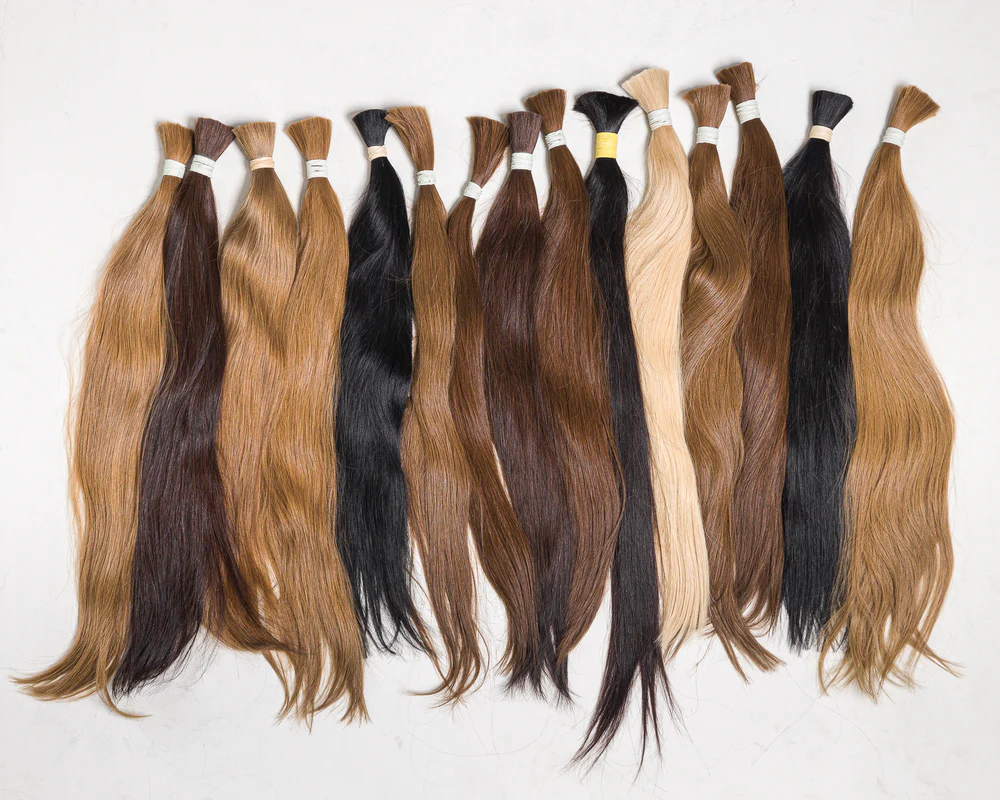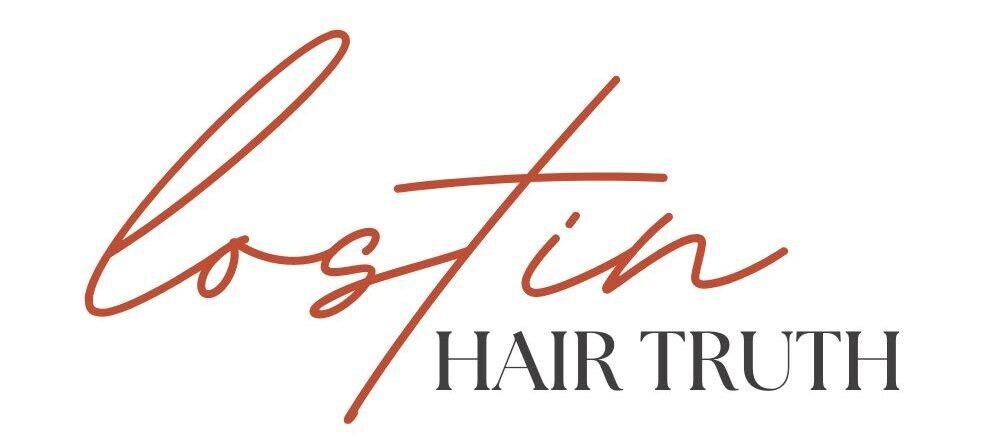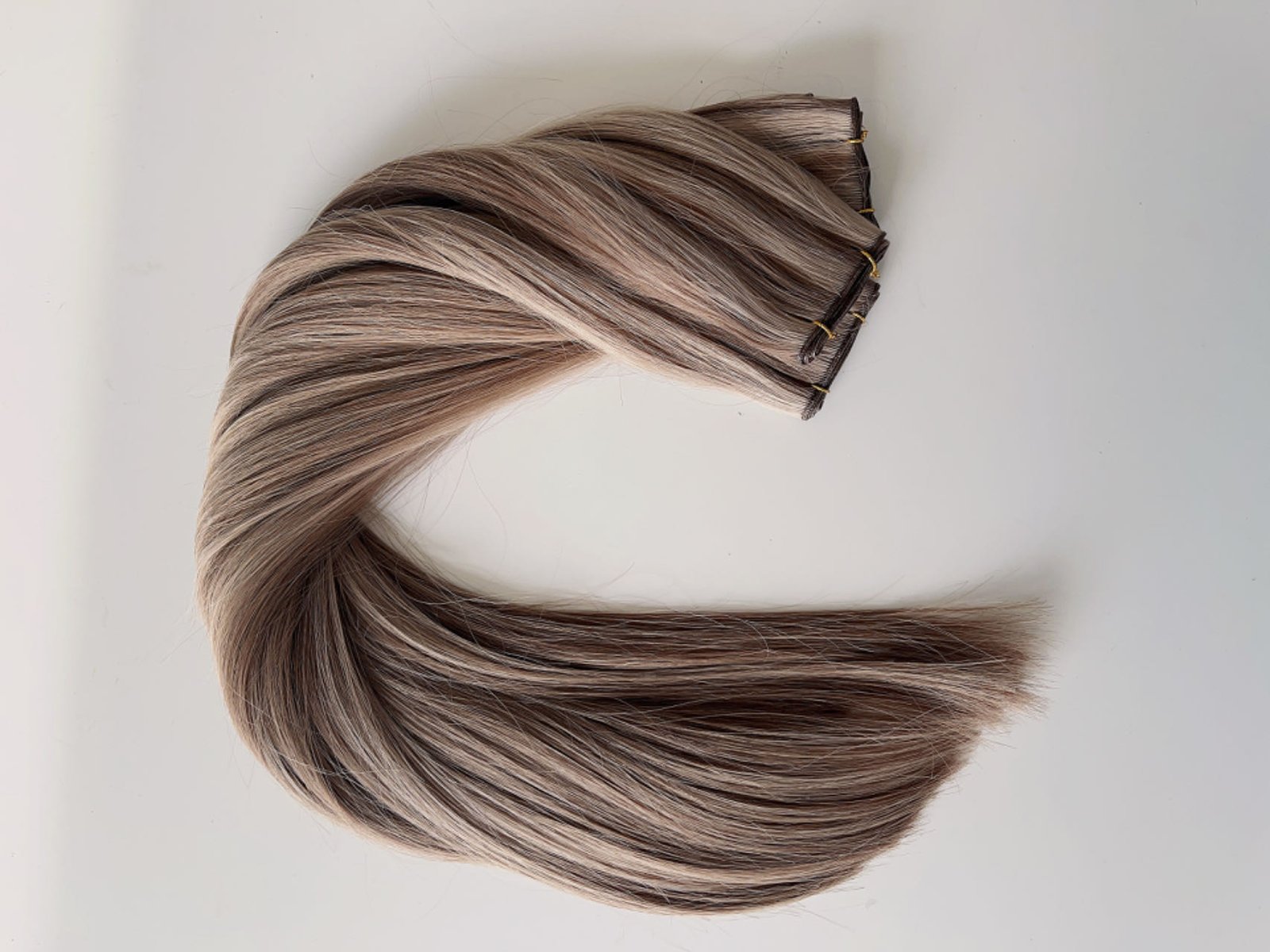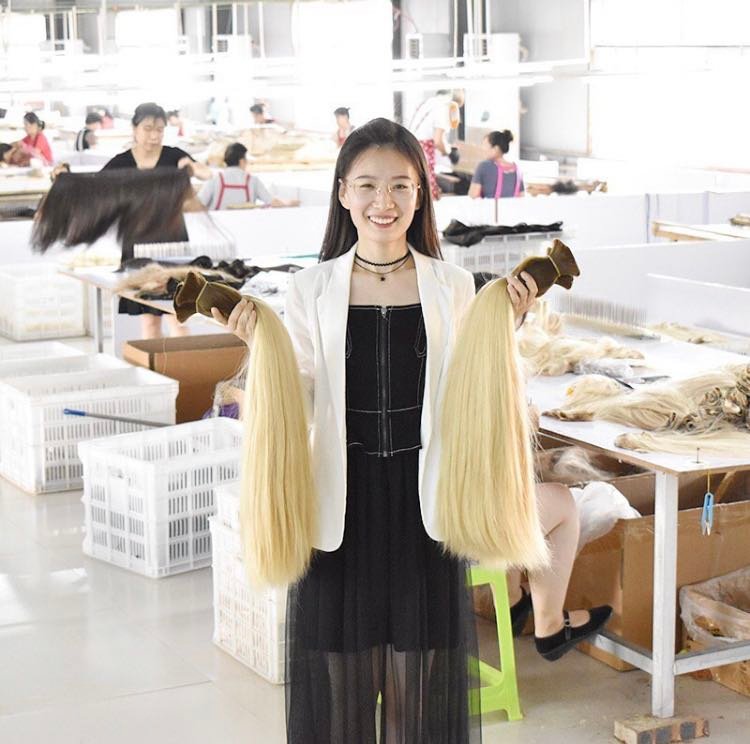When comparing Russian (Slavic) and Chinese (Asian) hair, it’s important to note that neither is universally “better.” Each type of hair offers different benefits depending on the desired style, durability, and budget.

Russian hair is known for its finer texture and is a great match for those with lighter, thinner hair, such as Caucasians. One of its main advantages is that it comes in naturally lighter shades, reducing the need for extensive bleaching. However, Russian hair is quite scarce, which significantly drives up its price. On average, high-quality Russian hair can cost around $600 per 100 grams (factory price), making it a premium option. This high price is largely due to its limited availability and high demand.
Chinese (Asian) hair, on the other hand, is much thicker and more durable. It can withstand frequent styling, heat, and chemical treatments better than Russian hair. However, its thickness makes it harder to blend with fine-textured hair and less likely to retain texture. Asian hair is a more budget-friendly option, typically costing about $200 for 100 grams of longer lengths, which is a fraction of the price of Russian hair.
Contents
Why Can’t You Buy Authentic Russian Hair in China?
It’s nearly impossible to find genuine Russian hair being sold in China, and there are a few key reasons behind this.
First, China imposes a 13% GST on imported goods, including hair. Since China’s labor costs are no longer as low as they once were, importing hair from Russia or other countries would leave almost no profit margin for Chinese factories. This makes it highly unprofitable for Chinese businesses to sell authentic Russian hair.
Additionally, even in Russia, many local factories that claim to sell “Russian hair” often mix it with hair from other countries to reduce costs. In some cases, the hair may not even be from Russia at all. If Chinese factories were to import truly authentic Russian hair, the prices would skyrocket. Given that the cost of Russian hair is already high—around $600 per 100 grams—adding import taxes and labor costs would make the price unaffordable for most consumers.
So, if you see “Russian hair” being sold in China at a low price, it’s very likely that it’s not 100% Russian.
Why Are So Many Suppliers Claiming to Sell Russian Hair?
In the world of hair extensions, everyone seems to be offering “Russian hair”—but is it really? Many buyers are obsessed with getting Russian hair, believing it to be the best. Suppliers, knowing this, are quick to claim their products are Russian, even when they’re not. In such a competitive market, where other sellers make these claims, being honest can cost you customers. Buyers might choose to go elsewhere, chasing the promise of Russian hair, even if what they receive is far from authentic.
How Can You Tell If The Hair You Buy Is Real Russian Hair Or Not?
Identifying genuine Russian hair can be tricky, but there are a few signs to look for. Real Russian hair is typically finer in texture and comes in natural lighter shades, unlike the thicker and darker Asian hair. One clear indicator is how fast the hair bleaches—authentic Russian hair lightens quickly with minimal damage, whereas non-Russian hair, especially Asian, takes much longer time. Price is also a major clue. If someone is offering “Russian hair” at a price that seems too good to be true, it probably is not. Genuine Russian hair is expensive, usually around $600 per 100 grams from factory, and the distributors or wholesalers can resell it up to $1,000.
How do I decide between Russian and Asian hair extensions?
When deciding between Russian and Asian hair extensions, it’s important to remember that the quality of the hair doesn’t depend solely on where it comes from but rather on the raw material itself. The key factors to look for include whether the hair donor’s natural hair was healthy, whether the raw hair collected has been dyed or chemically treated, and if the cuticle alignment is intact. Hair with healthy cuticles that haven’t been altered will have better longevity and a more natural appearance. So, instead of focusing purely on the country of origin, prioritize these aspects to ensure you get high-quality hair extensions.
Conclusion
In conclusion, both Chinese and Russian hair extensions come with their own strengths and weaknesses. Chinese hair offers durability and affordability, while Russian hair provides a finer texture and natural light shades, but at a much higher cost. When selecting a hair extensions supplier, it’s crucial to carefully evaluate the quality of the hair and ensure that it meets your specific needs. Additionally, honesty is key—choose a supplier who is transparent about the origin and quality of their products. Trustworthiness should be just as important as the hair itself when making your decision.
Lostin Hair Co, a leading supplier of human hair extensions in China, specialize in providing top-quality 100% Remy human hair extensions with intact cuticles. With low minimum order quantities and custom packaging options, we make it easy for both new and established businesses to offer the best to their clients. Contact us today to discover how we can help elevate your hair extension offerings!




